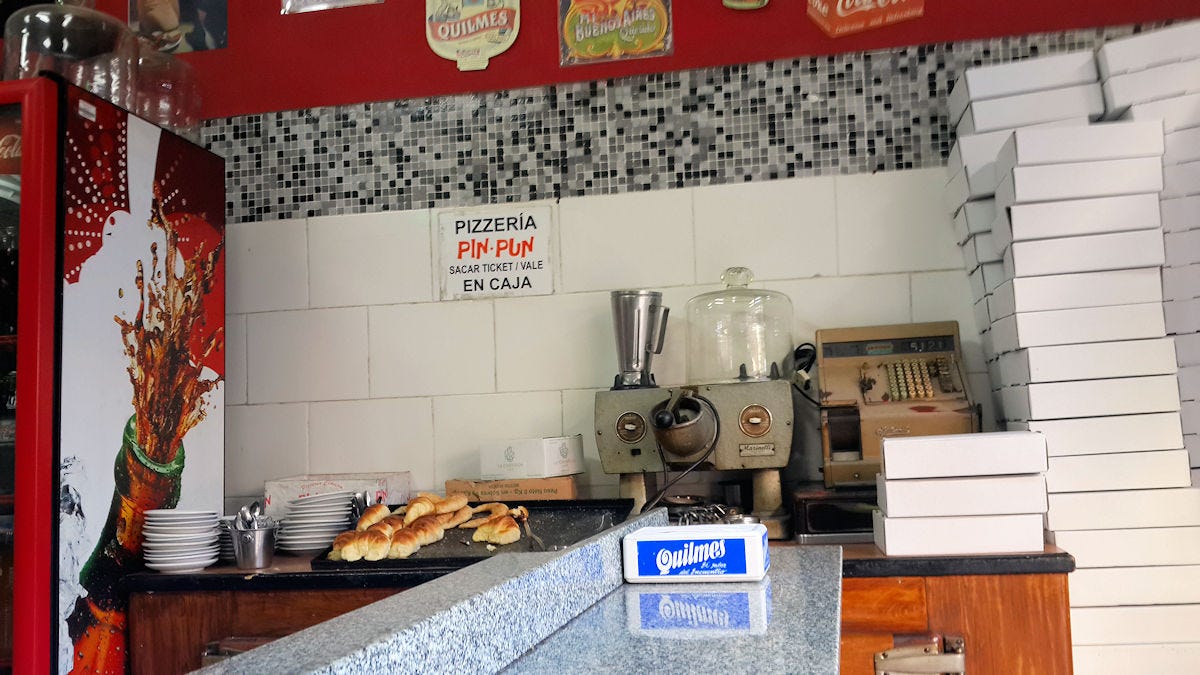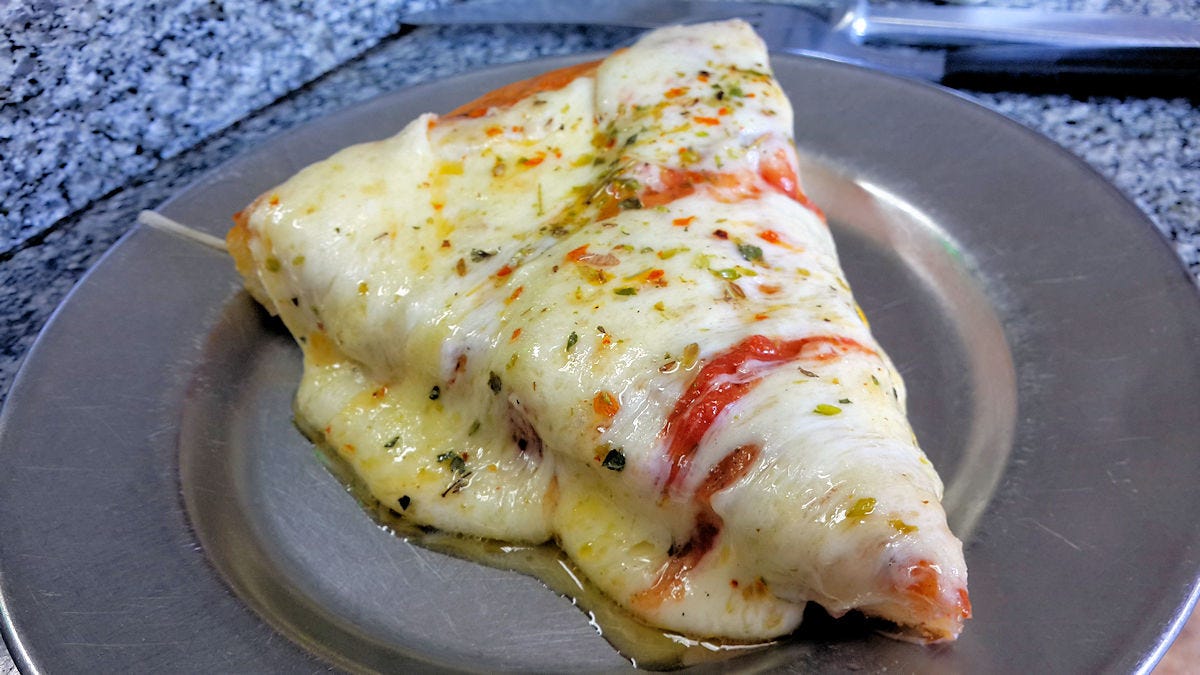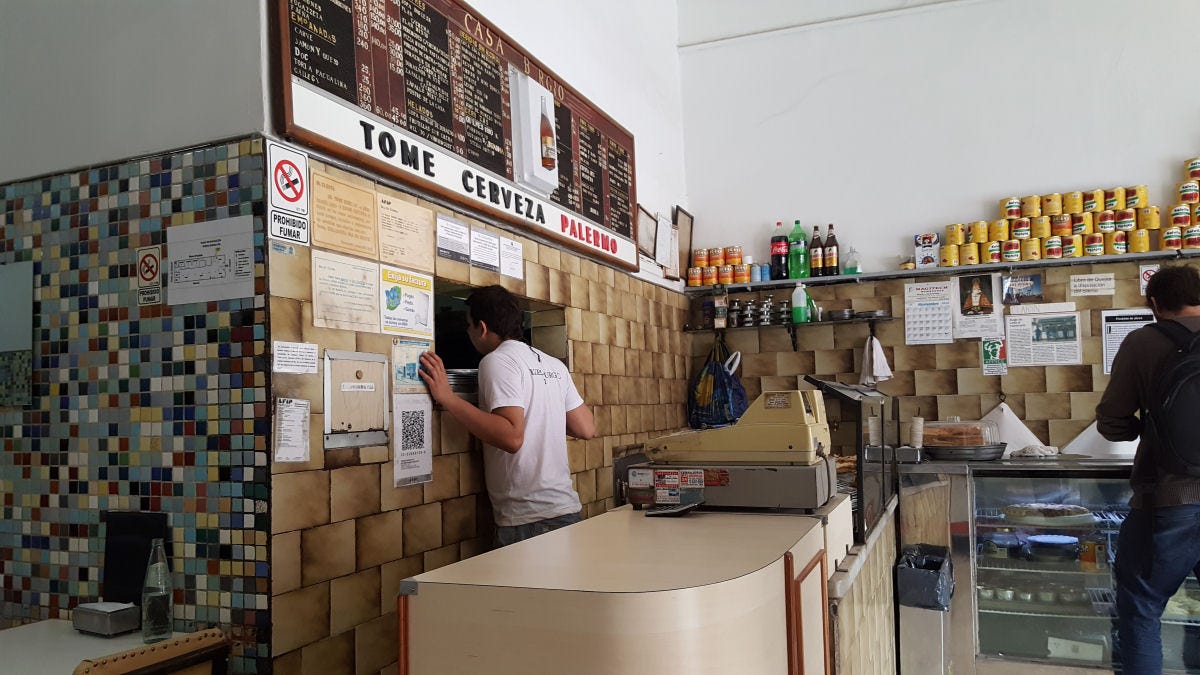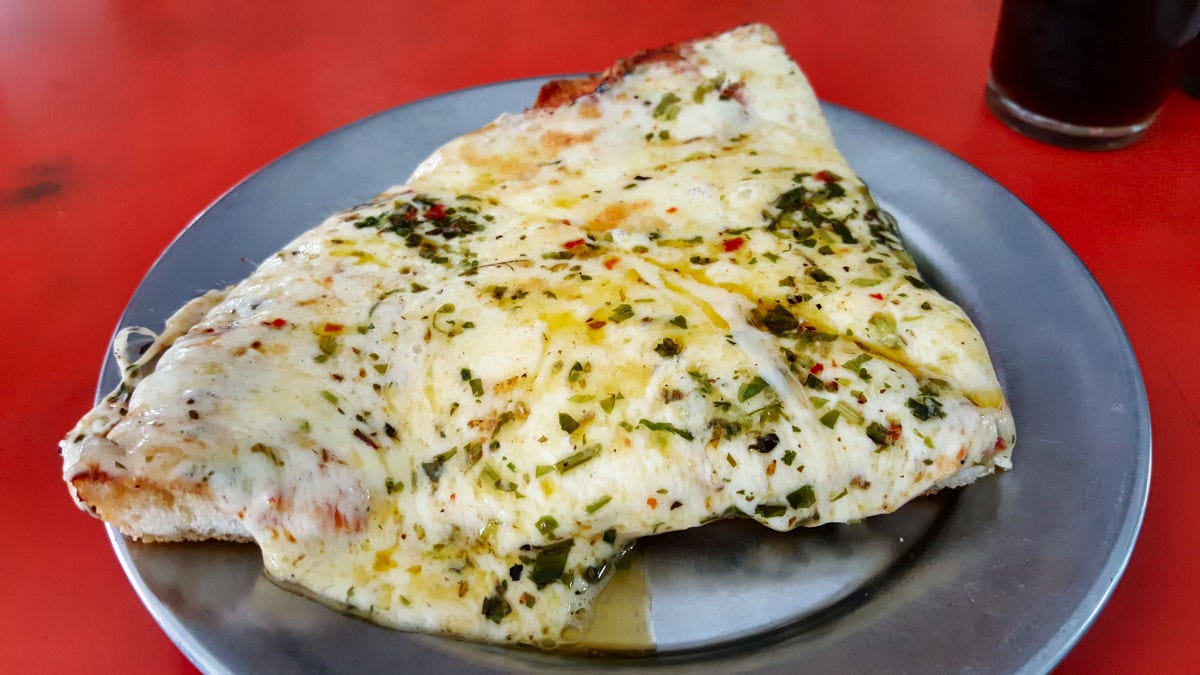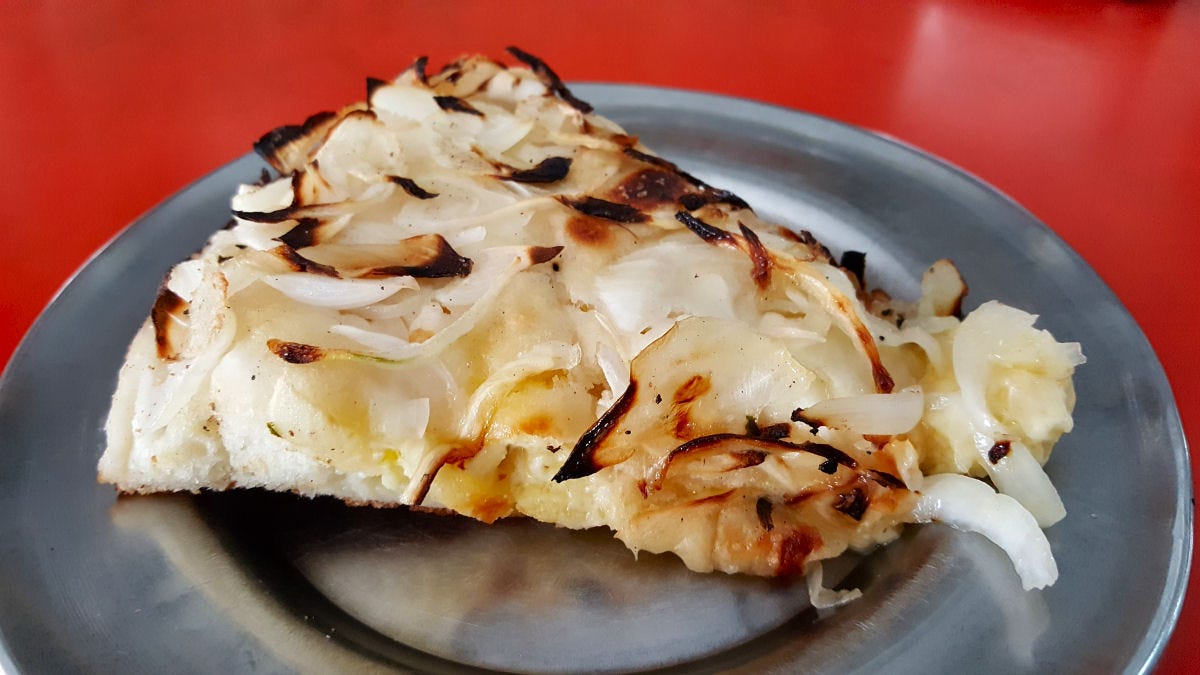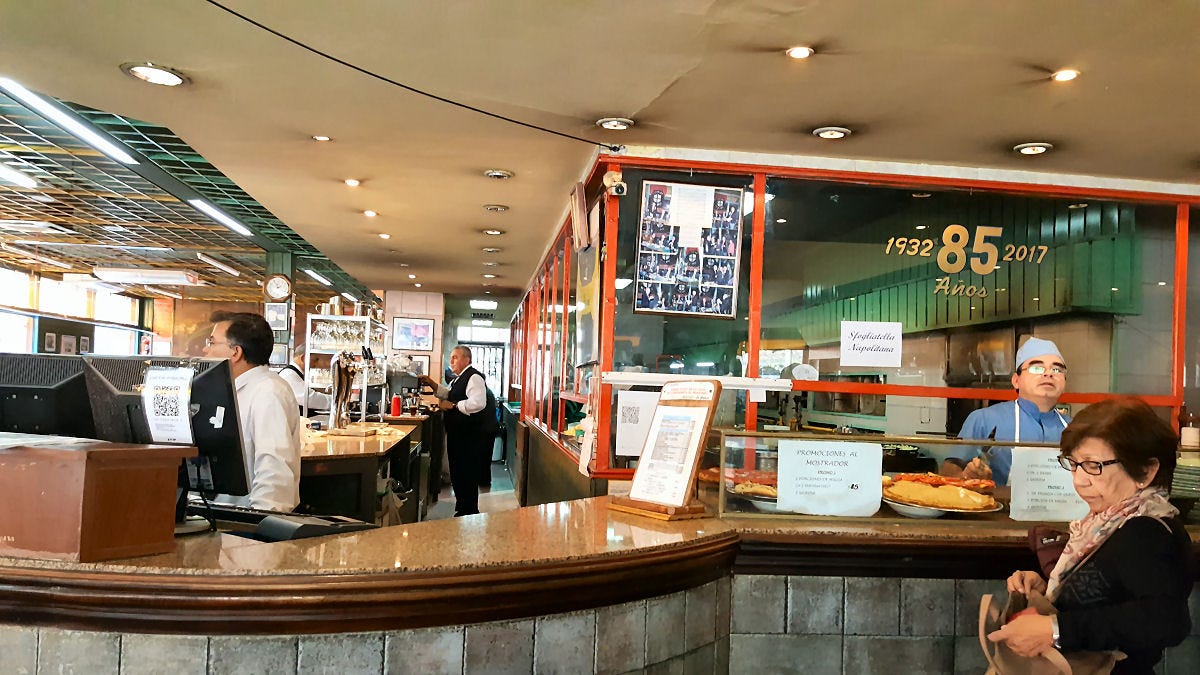Timeworn or Venerable?
In which I follow the lead of local newspaper La Nación to explore the oldest pizzerias in town.
This weekend, local newspaper La Nación published a short piece, not much more than a “listicle” of the ten oldest pizzerias in Buenos Aires (really, eleven, as they added a “bonus” one at the end). Now, I haven’t verified that there aren’t older ones, I’m trusting them at their word. These are not, to be clear, necessarily the original pizzerias in the city, but simply the oldest of those that are still open. After all, the biggest wave of Italian immigration was in the latter part of the 1800s, and the oldest of these is 1927, not even a full century ago.
The article, if one could call it that, was little more than the name of the pizzeria, the date of its opening and, for most of them, no more than a couple of sentences about its founding and its current status. Though I do love my history, I’m more interested in the pizzas themselves, something that for the most part, they gave short shrift to.
As it turns out, I’ve been to all eleven spots, most of them many times, so away we go! I’m going to split this in three, today and the next two days, or it’s going to be just way too long.
1927 - Pin Pun, Corrientes 3954, Almagro
Currently the oldest extant pizzeria in the city, I first checked this place out when I was doing my infamous “92 Bus Pizzeria Dream Tour”. It was a several year long venture where I’d had a dream about there being exactly 92 pizzerias along the route of the 92 bus here in town. It was actually pretty close to accurate in the moment, though a few openings and closings changed the numbers as time went on. This was the 60th stop on the trek, about a decade ago.
My thoughts at that original visit (there have been a couple of more since), and I have no reason to say differently today: The name is a slang term for two things that are basically the same, or equal – I’m not sure how that applies to a pizzeria – sort of like, “Just Alike Pizzeria” – maybe it was started by twins. Visually, we weren’t holding out much hope when this slice got slapped on a plate – I mean, it’s oozing oil like the Exxon Valdez. Sighing, we cut it up and dove into the pieces. Oh my. Near perfect crust. Great tomato sauce. And despite the ooze, absolutely delicious, gooey and flavorful cheese. No wonder their claim to be Almagro’s favorite pizza since 1927 – just all around “Yum”. That’s no same-same pizza. We’d go back.
1932 - Pizzeria Burgio, Av. Cabildo 2477, Belgrano
Wood-fired oven pizza that’s been going for over ninety years now, except, La Nación notes, during a period around 2020-2022, where, inexplicably, it seems to the authors, they closed up temporarily. I mean, I can’t think of anything that happened around that period that had restaurants closing up, can you? Though, admittedly, pizzerias weren’t as common closures given that so much of their business is delivery or takeout. I’d gone to this place originally as it showed up on multiple lists not just as a highly rated pizzeria, but for having what numerous folk opined, was the best fugazzeta in the city. I’m coming up on a post about what that is, but in short, it’s a cheese and onion topped pizza dough.
My thoughts eight years ago, and I stand by them: It’s one of those traditional porteño places where you order a slice or two and then stand at a counter and eat. It’s been around since the 1930s, and one of their “secrets” is that they top the pizzas with provençal, or a mix of chopped garlic and parsley, as a finishing touch. We decided to try their fugazzeta, one of the choice recommendations of many reviewers, and I’ve got to say, it’s one of the best I’ve had. I swear the onions are bathed in butter before being stuck under the broiler, and the dough and cheese are not overwhelming underneath as they are at some spots. In fact, I should try fugazzeta at more places on these treks – I mean, it’s dough, cheese, and caramelized onions. What’s not to like? They didn’t have a plain mozzarella pizza ready, and for some reason, they seemed unable to produce one for nearly 25 minutes (several actually came out of the kitchen, but all went to customers who were ordering whole pies to take-away – meanwhile, half a dozen of us stood around waiting). With apologies, the counter guy doubled everyone’s order at no cost, so we got two slices for the price of one when the plain pies finally came out. Really good dough, decent sauce, though as usual could have used more of it. The cheese a bit too oily for our tastes. But wow, that garlic and parsley really does add to the flavor – I’m stealing that. Overall, I really liked the place.
1932 - Banchero, Av. Almte Brown 1220, La Boca
This place holds a special accolade in the hearts of locals as it’s the place where the aforementioned fugazzeta was “invented” by Juan Banchero, a Genovese immigrant. He actually invented it earlier, as he had a previous pizzeria, starting in 1893, but since this is the place that’s still open (and now with two locations along Av. Corrientes in the theater district), and it was still his, this place gets the credit by default.
Thoughts at the time, and they weren’t positive: We knew we had to try the fugazzeta, that was a given. Of the selection of other pies on the counter (there’s also a whole menu of them to order at the table, but we wanted to grab, stand, eat, and go), we left it up to the counterman to pick. He proceeded to carefully explain each one in as simplistic terms as possible – I think he thought that our Spanish was too rudimentary to understand. We even got to him explaining the pizza with tomato sauce and those little grey-brown strips were “little fish”, something we might not have encountered on a pizza before, because “it’s unique to Argentina”. Sometimes I just shake my head at the provincialism of people who aren’t well traveled, what can I say. When I said, anchoas, anchovies, he looked shocked that I knew what they were. In the end, he selected a tomato slice as his favorite, topped with provencal, or garlic and parsley. The pizza slice, okay, nothing special. The dough was decent, average, maybe a bit too thick for our tastes, and despite being a tomato slice, no tomato sauce on it. None. Just cheese and sliced tomatoes and the provencal. The fugazzeta, honestly, was disappointing. The cheese in it had a weird, chalky, grainy texture, almost like they use some ricotta or something similar and had over-baked it. And the onions taken too far, into the territory of burnt and bitter.
1932 - Güerrin, Av. Corrientes 1368, San Nicolás
There was a point in time where Güerrin (Genovese slang for “Robin Hood”) was one of my favorite pizzerias in town. Of the “Argentine style pizza” places it’s still in my top five, and when friends who are visiting want to find out what exactly “Argentine style pizza” is all about, it’s often the spot I take them to. And over the years, setting aside a couple of our neighborhood go-to pizzerias, it’s probably the pizzeria I’ve gone to the most times in my twenty years here. That is not my bald dome in the lower left, but that of my friend Marc, visiting from New York.
Thoughts from first visit in 2006: The pizza itself arrives hot and fresh. First, however, you have to navigate your way through the menu, an unwieldy affair that contains eight, count them, eight pages of listings of different pizza combinations that are offered. Top that with that you can then choose from any of those ingredients and combine them to your personal tastes. There are legion vegetables, sausages, hams, beef in variety, cheeses, and different sauces (this is the first place here I recall seeing a salsa blanca for a pizza). I went for a combination of prosciutto, mushrooms, and provolone cheese. This may have been the first place I’ve ordered a mushroom pizza in Buenos Aires and received a pizza topped with canned mushrooms. I’m not fond of canned mushrooms, though these were better than some. Still, I loved the pizza – crisp, relatively thin, slightly smoky crust, generous toppings, cooked through perfectly.
Just a note on the slices of fainá there on the right in the second picture. It’s a chickpea and cheese flatbread, akin to the farinata of Liguria. There, it’s eaten as a street snack. Here, it’s generally paired with pizza, either in more or less alternating bites, or, slapped atop a plain mozzarella slice as a top crust.
And I’m going to stop there for today, with the four oldest of the eleven spots covered.


